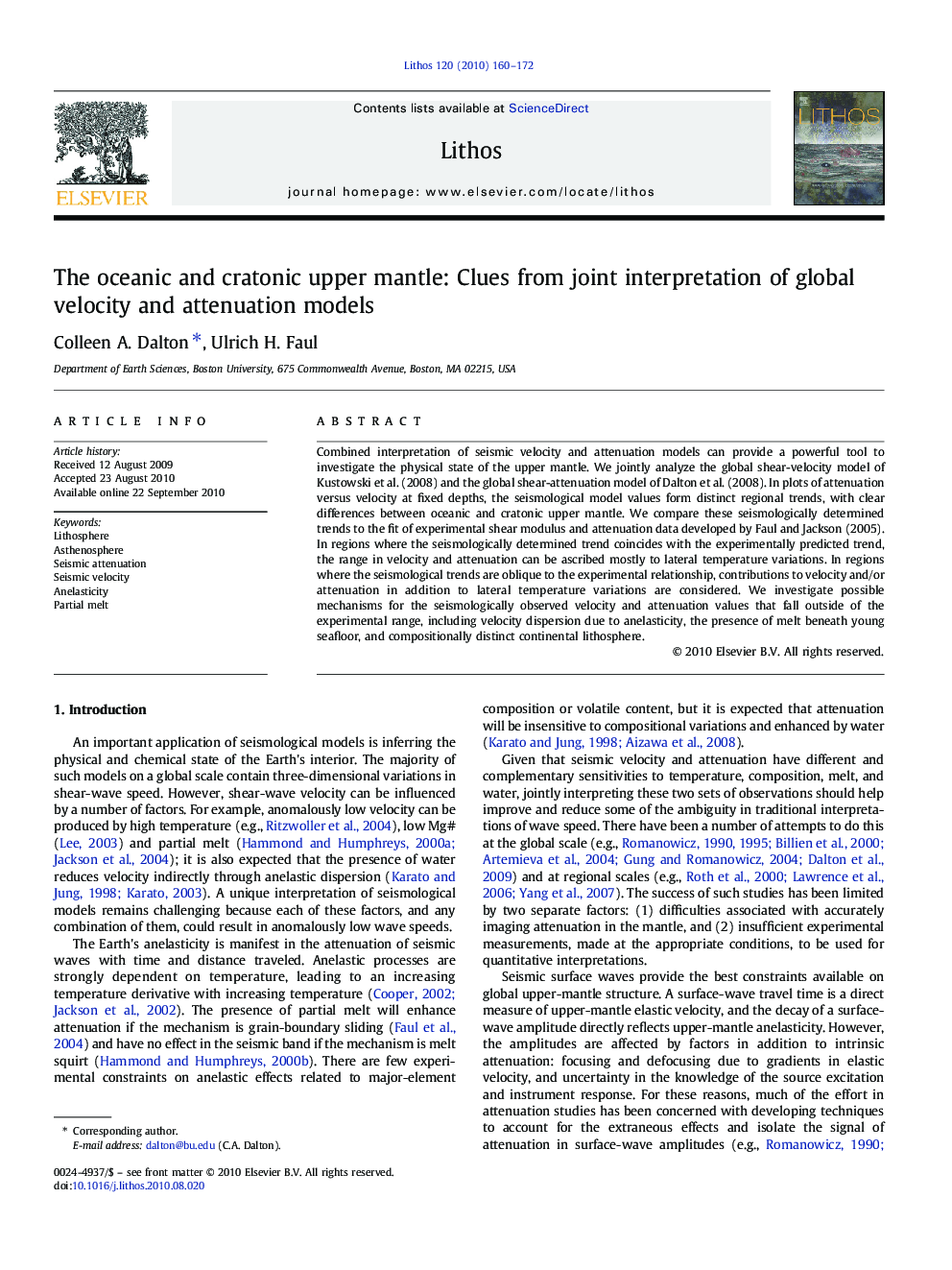| Article ID | Journal | Published Year | Pages | File Type |
|---|---|---|---|---|
| 4716817 | Lithos | 2010 | 13 Pages |
Combined interpretation of seismic velocity and attenuation models can provide a powerful tool to investigate the physical state of the upper mantle. We jointly analyze the global shear-velocity model of Kustowski et al. (2008) and the global shear-attenuation model of Dalton et al. (2008). In plots of attenuation versus velocity at fixed depths, the seismological model values form distinct regional trends, with clear differences between oceanic and cratonic upper mantle. We compare these seismologically determined trends to the fit of experimental shear modulus and attenuation data developed by Faul and Jackson (2005). In regions where the seismologically determined trend coincides with the experimentally predicted trend, the range in velocity and attenuation can be ascribed mostly to lateral temperature variations. In regions where the seismological trends are oblique to the experimental relationship, contributions to velocity and/or attenuation in addition to lateral temperature variations are considered. We investigate possible mechanisms for the seismologically observed velocity and attenuation values that fall outside of the experimental range, including velocity dispersion due to anelasticity, the presence of melt beneath young seafloor, and compositionally distinct continental lithosphere.
Research Highlights► Globally, seismic attenuation and velocity are anti-correlated in the upper mantle. ► Comparison of seismic attenuation and velocity in the upper mantle indicates the presence of partial melt beneath mid-ocean ridges at 100-150-km depth. ► Comparison of seismic attenuation and velocity in the upper mantle indicates the need for strong chemical heterogeneity within cratonic lithosphere.
